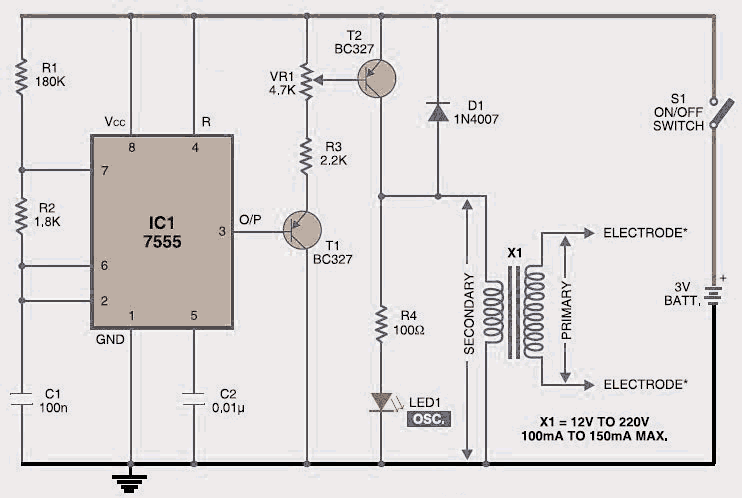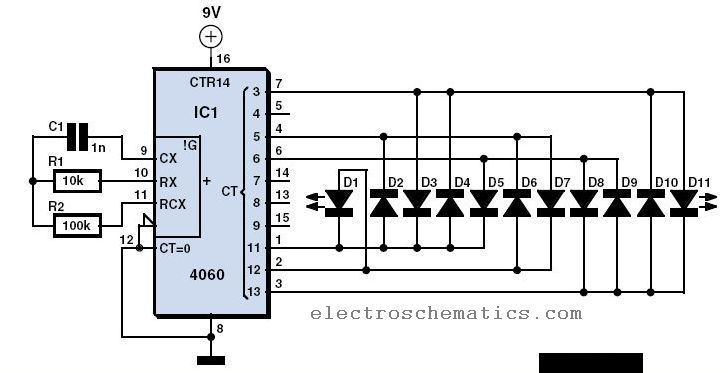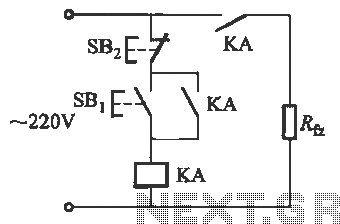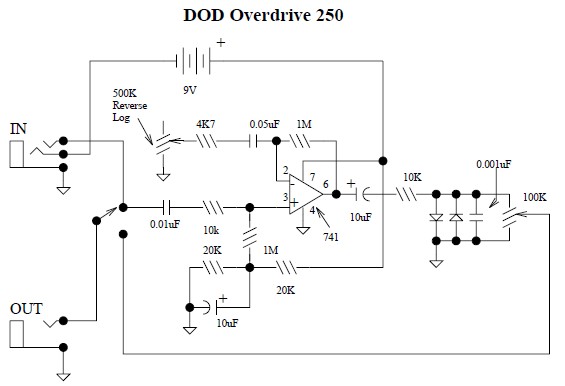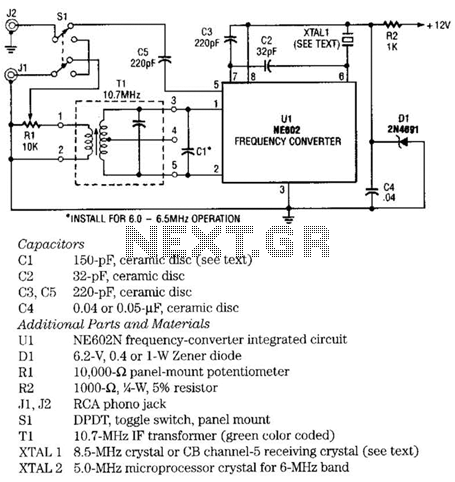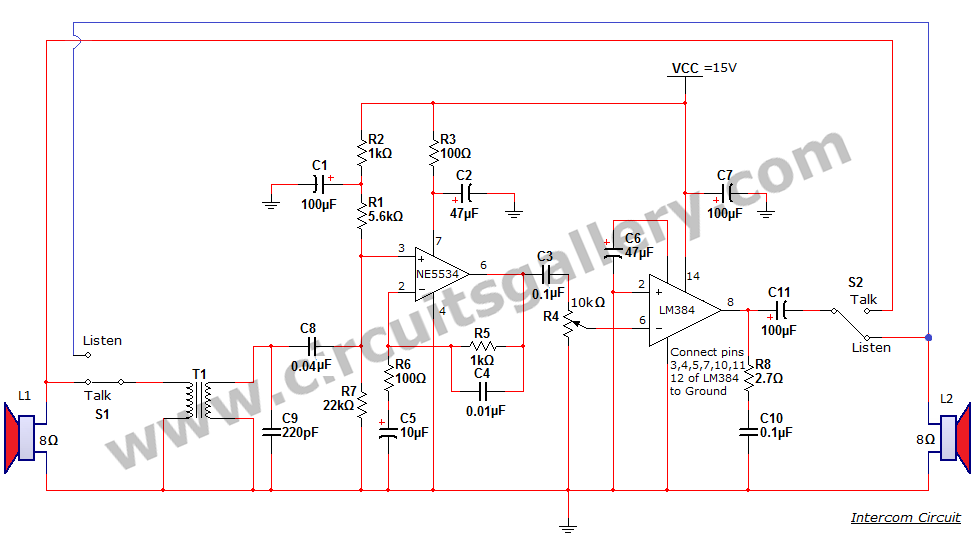
15w rf amplifier circuit
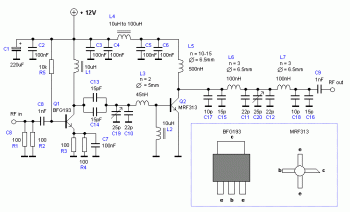
An RF power amplifier is a type of electronic amplifier used to convert a low-power radio-frequency signal into a larger signal of significant power, typically for driving the antenna of a transmitter. It is optimized for high efficiency, high output power (P1dB) compression, good gain, good return loss on both the input and output, and optimal heat dissipation. The primary applications of the RF power amplifier include driving another high power source, driving a transmitting antenna, microwave heating, and exciting resonant cavity structures. Among these applications, driving transmitter antennas is the most recognized.
An RF power amplifier typically consists of several key components including transistors, matching networks, and biasing circuits. The transistors serve as the primary active devices that amplify the input signal. Common types of transistors used in RF amplifiers include bipolar junction transistors (BJTs) and field-effect transistors (FETs), which are selected based on their frequency response and power handling capabilities.
The matching network is crucial for maximizing power transfer between the amplifier and the load, which, in this case, is often an antenna. This network ensures that the impedance of the amplifier output matches the impedance of the antenna, typically 50 ohms, to minimize reflections and maximize efficiency. The design of the matching network can involve various passive components such as capacitors, inductors, and transformers.
Biasing circuits are employed to set the operating point of the transistors, ensuring they operate in the desired region of their characteristics for optimal linearity and efficiency. Proper biasing is essential to maintain the performance of the amplifier across the intended frequency range and load conditions.
Thermal management is also a critical aspect of RF power amplifier design. As these amplifiers generate significant heat during operation, adequate heat sinking or thermal dissipation techniques must be implemented to prevent overheating and ensure reliable performance. This can involve the use of heat sinks, fans, or even more advanced cooling methods in high-power applications.
Overall, RF power amplifiers are integral to various communication systems, including radio, television, and cellular networks, where they play a vital role in ensuring that signals are transmitted effectively over long distances. Their design and optimization involve a careful balance of efficiency, linearity, and thermal performance to meet the stringent requirements of modern RF applications.An RF power amplifier is a type of electronic amplifier which is utilised to convert a low-power radio-frequency signal into a larger signal of significant power, usually for driving the antenna of a transmitter. It is usually optimized to have high efficiency, high output Power (P1dB) compression, good gain, good return loss on the input and outp
ut, and optimum heat dissipation. The basic applications of the RF power amplifier include driving to another high power source, driving a transmitting antenna, microwave heating, and exciting resonant cavity structures. Among these applications, driving transmitter antennas is most well known. 🔗 External reference
An RF power amplifier typically consists of several key components including transistors, matching networks, and biasing circuits. The transistors serve as the primary active devices that amplify the input signal. Common types of transistors used in RF amplifiers include bipolar junction transistors (BJTs) and field-effect transistors (FETs), which are selected based on their frequency response and power handling capabilities.
The matching network is crucial for maximizing power transfer between the amplifier and the load, which, in this case, is often an antenna. This network ensures that the impedance of the amplifier output matches the impedance of the antenna, typically 50 ohms, to minimize reflections and maximize efficiency. The design of the matching network can involve various passive components such as capacitors, inductors, and transformers.
Biasing circuits are employed to set the operating point of the transistors, ensuring they operate in the desired region of their characteristics for optimal linearity and efficiency. Proper biasing is essential to maintain the performance of the amplifier across the intended frequency range and load conditions.
Thermal management is also a critical aspect of RF power amplifier design. As these amplifiers generate significant heat during operation, adequate heat sinking or thermal dissipation techniques must be implemented to prevent overheating and ensure reliable performance. This can involve the use of heat sinks, fans, or even more advanced cooling methods in high-power applications.
Overall, RF power amplifiers are integral to various communication systems, including radio, television, and cellular networks, where they play a vital role in ensuring that signals are transmitted effectively over long distances. Their design and optimization involve a careful balance of efficiency, linearity, and thermal performance to meet the stringent requirements of modern RF applications.An RF power amplifier is a type of electronic amplifier which is utilised to convert a low-power radio-frequency signal into a larger signal of significant power, usually for driving the antenna of a transmitter. It is usually optimized to have high efficiency, high output Power (P1dB) compression, good gain, good return loss on the input and outp
ut, and optimum heat dissipation. The basic applications of the RF power amplifier include driving to another high power source, driving a transmitting antenna, microwave heating, and exciting resonant cavity structures. Among these applications, driving transmitter antennas is most well known. 🔗 External reference
